Table of Contents
Looking for a software development partner, but your local market is expensive, while the offshore team is too hard to maintain and cooperate with? Then, you still have a third option — nearshore outsourcing!
Nearshore firms are usually situated in nearby countries, where the time difference isn’t more than 2-3 hours with your own state. Nearshore software development in Eastern Europe is a powerful market that brings benefits both from clients and outsourcing companies. However, there are some questions you need to figure out before starting your partnership.
What countries to consider? How to establish efficient communication with nearshore vendors? Check our guide and explore the world of nearshore software development in Europe.
Core Benefits of Nearshore Software Development Outsourcing
So why do businesses of every industry and size resort to nearshoring? Here are the main benefits that make it more attractive than other software development models.
Optimized budget
One of the biggest reasons for nearshore outsourcing is lower rates. Western countries like UK, France, Germany, Benelux, and Scandinavia are traditionally highly-income countries, hence, the cost of software development services are corresponding with the economic situation.
Involving a partner from other countries with cheaper services is a logical solution for optimizing cost. The difference may save you up to 50% percent: in Western Europe, an average developer’s hourly rate is $65-$100, while in Eastern it’s about $25-$60.
The lower price may cause some concerns, like, what if lower rates also mean lower quality? But it’s not true: the software development industry is rapidly growing in Eastern Europe and the region accumulates impressive amounts of expertise and experience in software outsourcing and R&D centers operations. Software engineering is a prestigious line of work here, which only leads to increased competition between jobseekers and enhanced professional level of developers.
Quick access to big talent hubs
Eastern Europe has a lot to offer in the terms of manpower as well. According to Clutch, there are at least 2560 software development firms available. It’s pretty easy to find experts almost in any technology you may need. The most common and popular are:
- JavaScript;
- Node.JS;
- Java;
- Python;
- SQL;
- PHP;
- C++;
- C#;
- Ruby;
- Scala;
- Go;
You will also be able to connect with specialists skilled in cutting-edge technologies, like IoT, artificial intelligence, machine learning, or edge computing.
On-demand team
Nearshoring is also a great decision for your business if you:
- aren’t a tech company;
- don’t have an in-house development team;
- don’t have any experience in hiring tech employees;
- don’t need or don’t want to hire full-time developers to fulfill your needs.
It’s quite possible that every company, whatever its specialization is, may need to develop custom software. But assembling an in-house team is a long and demanding process, and frankly, if you develop software once to support your main activity, you don’t really need a team.
A nearshore team may cover your needs, and develop self-sufficient software, while you won’t need to invest in hiring, equipment, premises, etc. Cooperating with nearshore developers will be also quicker than onboarding a whole new set of employees, and it also relieves you from some pressure about team management and developers’ workloads.
Easy communication
Nearshore software development in Europe also means simple communication. There are almost no crucial cultural differences that may cause big misunderstandings or missteps, like it might be with more distant countries.
Europe has also only a few time zones, so there will be enough overlap in working countries, for example, between Slovakia and the UK to support face-to-face communication and productive cooperation.
Top Destinations For Nearshore Software Development In Eastern Europe
Ukraine
Main tech cities: Kyiv, Lviv, Kharkiv, Dnipro, Odesa
Average rates: $25-45
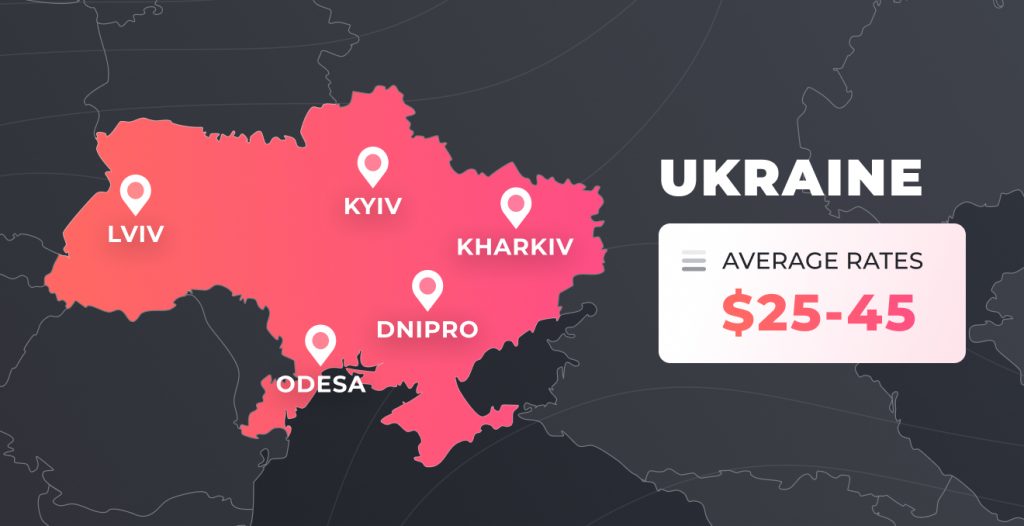
Poland
Main tech cities: Warsaw, Krakow, Lodz, Wroclaw
Average rates: $40-55
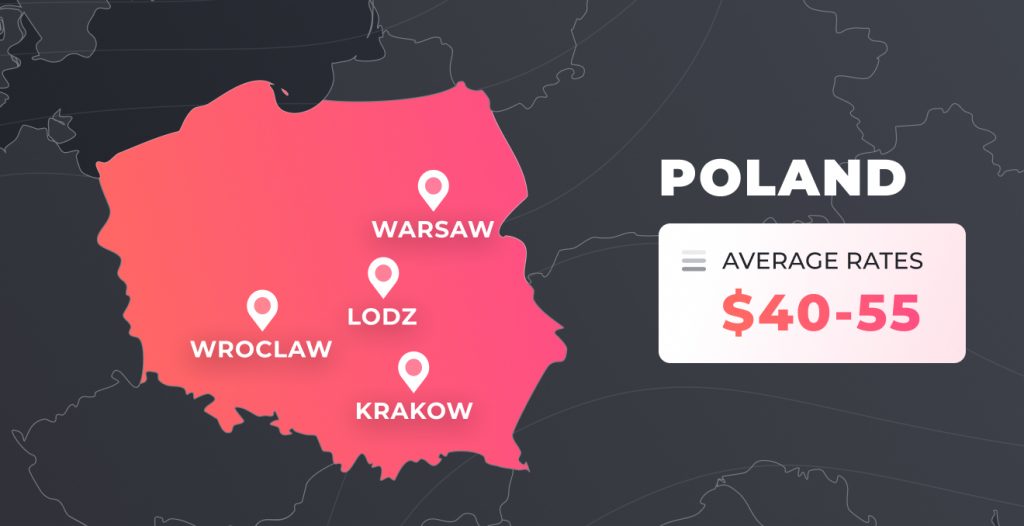
Poland is another powerful hub to search for nearshore developers. The market is reaching the number of 240 thousand specialists, and around 15 thousand technical graduates join the market.
Poland has a good economic climate: for example, according to NimbleFins, it’s one of the best European countries for creating a startup. EF English Proficiency Index states that Poles show the best English knowledge among Eastern and Central European Countries, which is a considerable benefit for foreign clients.
Bulgaria
Main tech cities: Sofia, Plodiv, Burgas, Varna
Averages rates: $35-50
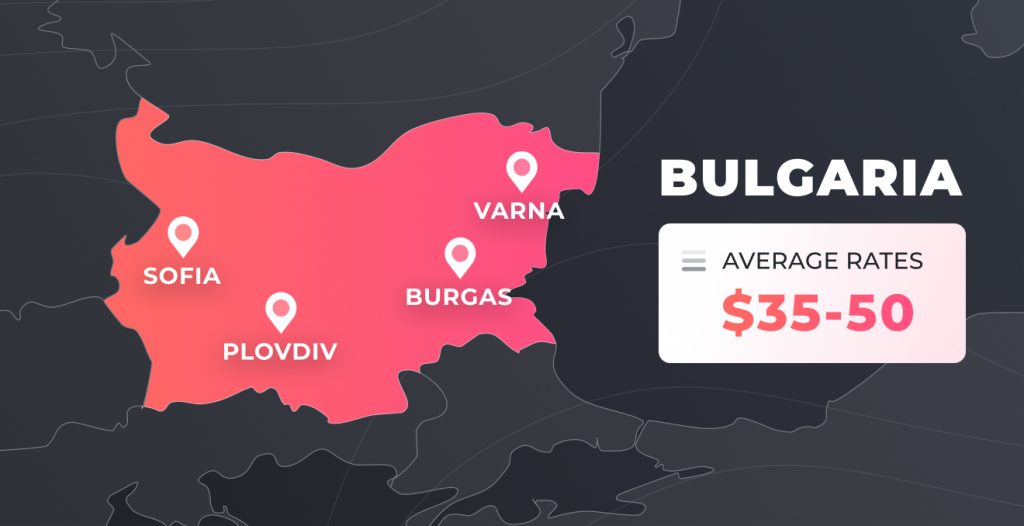
Bulgaria has a smaller talent pool than the previously described destination, but the number is still impressive: 55 thousand developers work in the country. Bulgaria offers more than 15 colleges for receiving ICT education with 5000 graduates per year.
The country’s sourcing market is also on growth: in 2019, this industry contributed 2.9 billion euros to the local GDP. By 2022, this market will take 4.7 billion and 8.9% market share.
Romania
Main tech cities: Bucharest, Cluj-Napoca, Timisoara, Iasi
Averages rates: $25-45
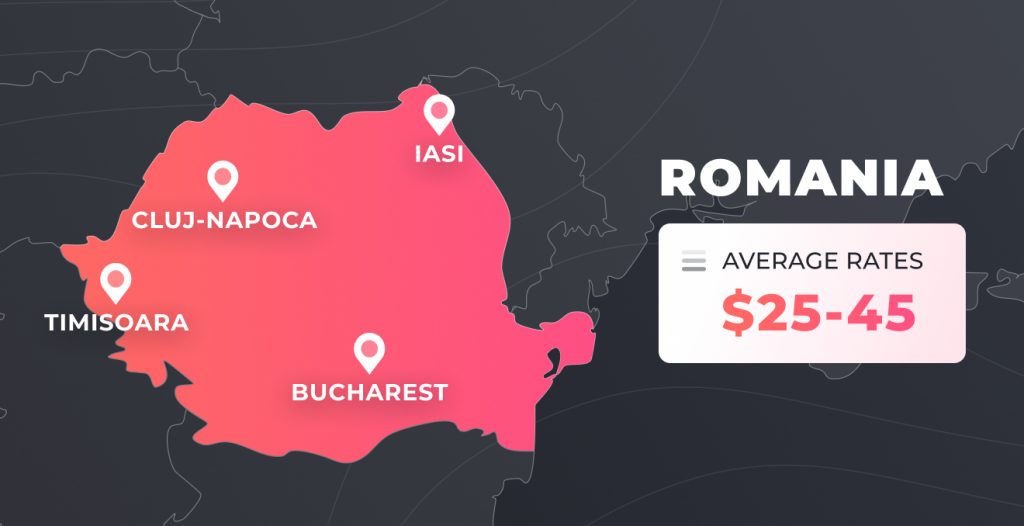
Romania can offer more than 100 thousand active software engineers, thanks to the strong technical education of 41 universities with technical programs.
Romania has been recognized as a top outsourcing destination in the world by different ratings, for example, KPMG named Romania one of the emerging locations in the world for IT-BPO outsourcing.
Serbia
Main tech cities: Belgrade, Novi Sad, Niš
Average rates: $25-50
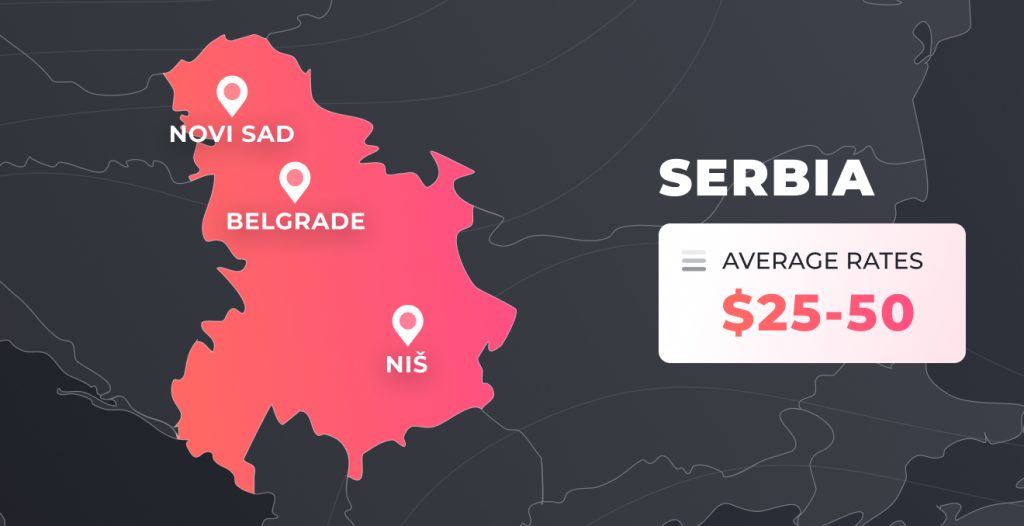
Serbia is rather a small country with 20 thousand software developers, however, the market still managed to reach whipping 580 million euros. The country’s popularity as a nearshoring software destination is only growing over time, being supported by the government.
Czech Republic
Main tech cities: Prague, Brno, Ostrava
Averages rates: $35-50
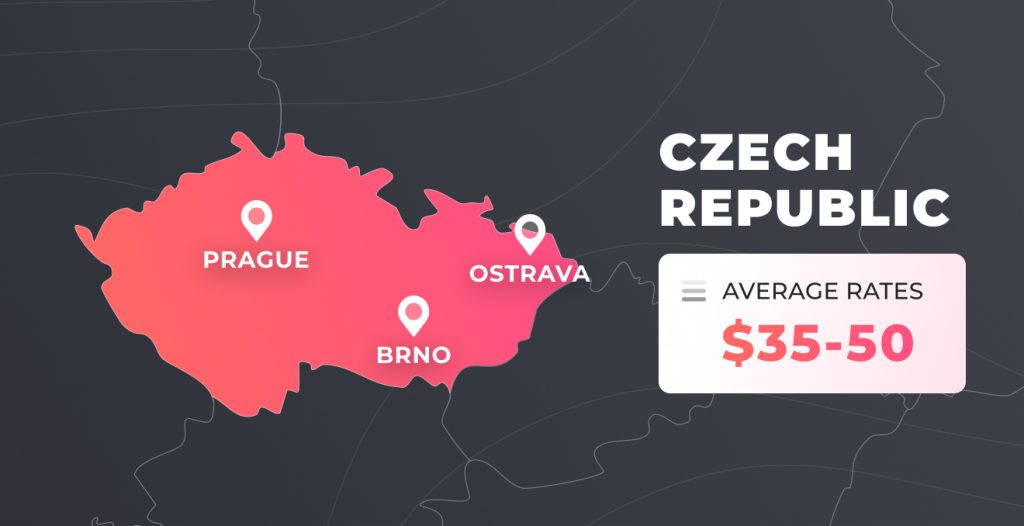
The Czech Republic has a significant talent pool, with 150 thousand developers and 7 thousand graduates annually. Hence, the country attacks the attention of major IT players who outsource the development or open R&D centers.
The stable economics, constantly growing GDP figure, as well as strong business culture, makes this country a great choice for nearshoring.
Hungary
Main tech cities: Budapest, Miskolc, Debrecen, Pecs
Average rates: $40-55
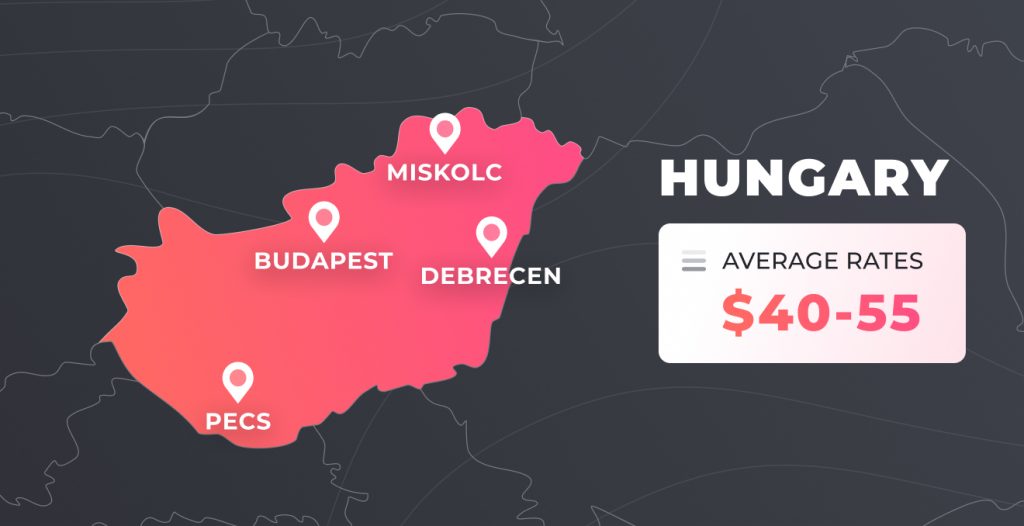
There are around 80 thousand IT specialists in Hungary, and more than 60% of revenue in the tech industry is generated by foreign companies. Despite rather a small market size, Hungarian programmers are known for a high level of skills: in 2018, the country was estimated to be the 4th in Europe in the programming ranking by SkillValue.
Slovakia
Main tech cities: Bratislava, Košice, Žilina
Average rates: $40-60
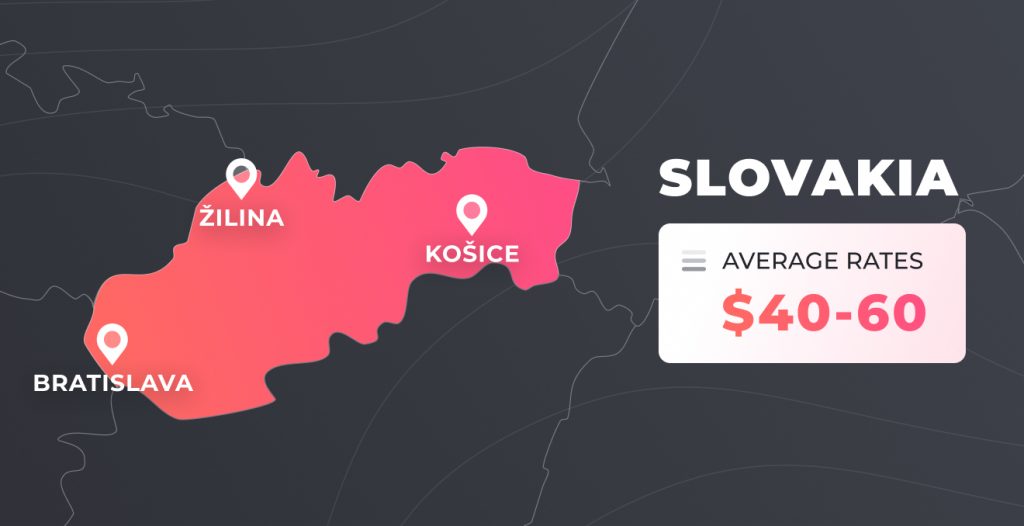
Slovakia is another small country on the list, but with a strong tech industry, 40 thousand developers, and around $2.5 billion of IT export. Thanks to its location, Slovakian citizens usually speak several foreign languages (English, German, Russian, and French among the most popular), which comes in handy for international cooperation.
Nearshoring Risks: How To Avoid Them
Despite all obvious benefits, cooperation with nearshore software partners may also bring some challenges. It’s true that risks are unavoidable in any type of partnership, but you can detect them beforehand and create a mitigation plan. Let’s look through the main risk of nearshore software development in Europe.
Choosing the right partner
The success of the project depends on the work of the nearshore company you chose. If the partner provides you with bad quality work, breaks deadlines, or violates the terms of your contract, you won’t definitely remember this experience as positive.
To avoid being disappointed with nearshore software development in Europe or any other destination, choose your vendor attentively. Research the company’s history, previous works, and clients. Thanks to social media and technical directories, it’s pretty easy to find any information you need, so don’t disregard this opportunity!
Remote Collaboration
The nearshore team is relatively close to your business, instead of an offshore partner. At the same time, it is still not the same as an in-house team located in the same office as you.
Remote collaboration demands very clear communication, where all the parties are interested in joint success and ready to keep up with a transparent discussion about any ups and downs. Another challenge is synchronization. However, a reliable vendor will ensure that your side is fully engaged in the process and understands the status of the project.
From the beginning, we suggest you establish core points about your collaboration with the vendor. Discuss how often you will communicate, what type of reporting you need, and how involved you want to be in the project.
Knowledge transfer
The vendor should be skilled in software development without any doubt, but they may be lacking in knowledge of your industry and its specifics. Eventually, if the software company doesn’t understand the context and your previous experiences, it won’t be able to create functional and self-sufficient applications.
As a client, you may search for vendors with relevant experience in your industry. However, don’t underestimate the preliminary stages of development that good nearshore companies run. For example, during our discovery stage, the team of business analysts, software architects, and UI/UX designers studies the industry, current trends, and solutions that exist on the market. Combining it with the data about your business processes and needs, we present detailed technical documentation and concept of your future software.
Altamira as Your Nearshore Software Development Partner
Since 2011, we help businesses grow and improve through software development. We are a trusted vendor for nearshore software development in Ukraine. Our clients are businesses in manufacturing, retail, real estate, and fintech industries from Europe, and the Middle East.
Cooperate with Altamira and benefit from:
- a team of more than 100 experienced software developers, QA engineers, UI/UX designers, DevOps specialists, software architects, and business analysts;
- elaborate discovery stage and deep research for the smooth start of development;
- flexible outsourcing and outstaffing cooperation terms;
- dedicated team development;
- individual approach to every project and assigned account manager who will guide you through the whole development process;
- extensive expertise with cutting-edge technologies like the Internet of Things or artificial intelligence;
- transparent billing and regular project reporting;
- NDA and data protection;
- full coverage of developers’ employment.
In Conclusion
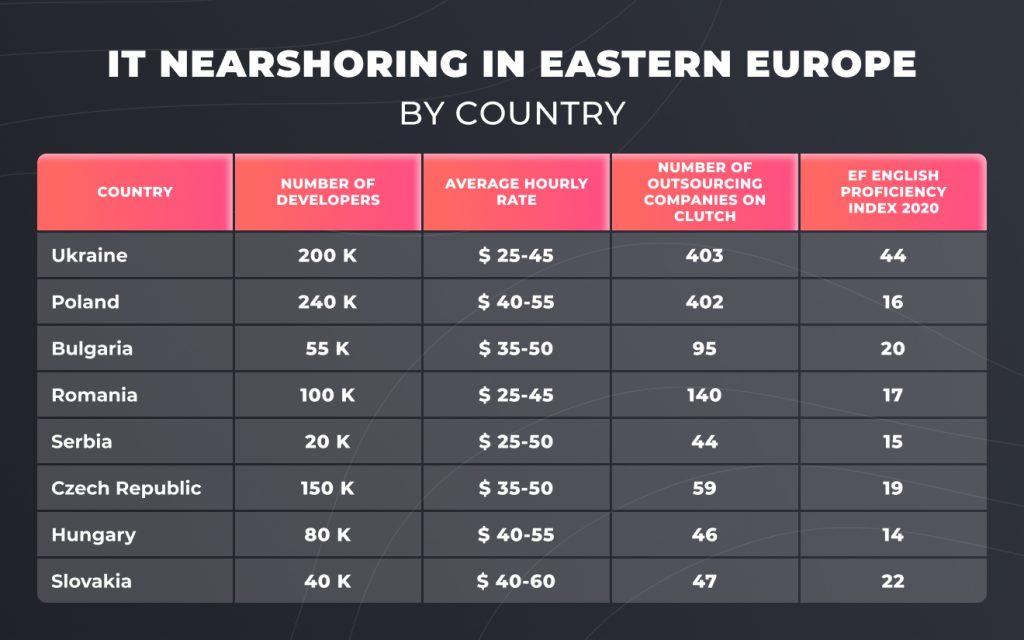
Nearshore software development in Europe is a great solution for those who look for alternatives to the traditional in-house development team. At the same time, it also brings new opportunities for businesses, for example, access to wider expertise.
Nearshoring keeps a perfect balance between onshoring and offshoring. It relieves part of financial and managerial pressure, but can still provide the high-quality software products you seek for.
FAQ



